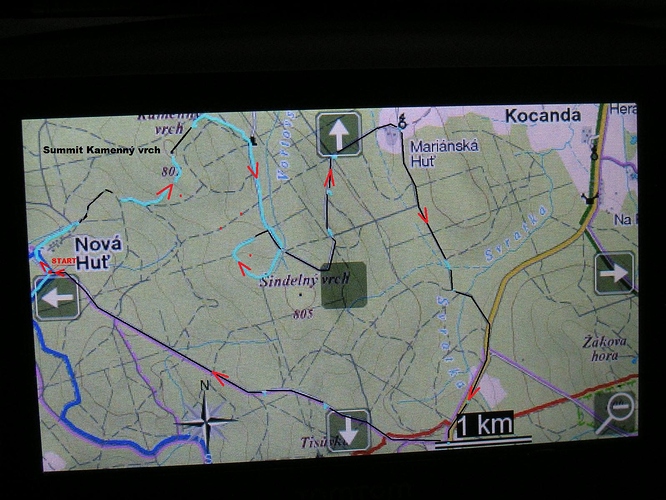Here in Colorado, we have an abundance of high summits. We have so many that our SOTA points distribution is vastly shifted upward compared to most other SOTA Assocations, providing a strong incentive to climb high.
Essentially:
9,000 to 10,500 feet 4 Points
10,500 to 12,500 feet 6 Points
12,500 to 13,500 feet 8 Points
13,500 UP 10 Points
This means that those of us who participate seriously in The Program do many activations in thin air, and we experience many “Summit Brain” effects of moderate hypoxia.
Here are two of my favorite examples:
- I had a fun activation in beautiful, late-afternoon sunny weather on W0C/PR-025, Rogers Peak, at 4085 M, 13,391 feet. I felt great, in fact, I was high-altitude happy, one of the most common effects of being up so high. After a gleeful activation, I packed up, and headed down the tundra along the ridge. Then I followed a long, steep slope down to the road and my car…only my car wasn’t there where I’d parked it. It was nowhere to be seen!
I knew I’d made a mistake, but it took longer to figure out than it should have. I pulled out my trusty GPS and looked at my track - the track was OK and complete, but I still couldn’t quite figure out where the car was, or why I wasn’t where I thought I was! I totally realized it was the altitude making it harder to think, but I still had to study the GPS track for several minutes before I understood which way to walk on the road to find the car!
What happened was that I had continued further down the high ridge above than where I’d come up, so I had dropped further east than where I’d left my car. The tundra had few obvious waypoints to notice - just rocks and flowers all over - so it was an easy mistake to make.
Why hadn’t I pulled out the GPS up on the ridge to check my perfectly good track and be sure where to descend? Because I felt so happy-confident due to the altitude and the reduced anxiety that comes with less oxygen! It was my second activation of the day up there, so I’d been above 4000 M for much of the day…
Of course the car was there, hidden around a bend in the road, a considerable distance from where I descended!
- On W0C/FR-019 Sundance Mountain, 3800M, I set up my gear and began my activation on a sunny June morning in 2014. I started out on 15M CW, but I made only one contact after several minutes of calling CQ. I decided to QSY to 20M. I was using my ATS-3B, which uses small plug-in modules to change bands. After changing the module and re-matching the tuner, I started calling CQ on 20M, and soon made 6 more contacts. I never moved down to another band, because rapidly developing cumulus clouds convinced me to get off the summit and get down.
Later, at home, I looked at my spots, and I was amazed to see that somehow I’d been spotted on 15M for the entire time period when I had been on 20M. There must have been something wrong with my spots!
Then I looked at my RBN record, and there were several spots from different skimmers, all on 15M !
What happened on the summit is that I had opened my box of band modules, removed the 15M module from the rig, put it in the box, and then pulled it back out and put it back into the radio, instead of the desired 20M module. Because the SOTA frequencies we often use are near XX.060 on both bands, and the ATS-3B doesn’t display all the digits, I never saw the difference. I also never thought about it, and never noticed that my tuner settings had not changed.
I was lucky to get 7 contacts on 15M, but I didn’t know which band I had been on until I studied my spots!
The usual thin-air effects we experience include feeling happy or carefree, forgetting things, misplacing things, becoming single-minded, ignoring problems, having trouble with knots and tangles, and making decisions too easily! Long experience leads to a better ability to cope with loss of oxygen, mostly through planning, habits, and awareness; however, the loss of good judgment and the ability to think with a sharp edge is relatively profound above 4000M.
My experiences with high activations suggest that going up high often, several times a week, greatly reduces the problems caused by hypoxia, for various reasons. The reverse is true - the worst effects occur to those who come here from near sea level, and who then climb above 3000 M without any adjustment. Physical sickness and tragic errors of judgment often occur. While we often joke about the silly things we do up high, the risks of going high are subtle but real, especially when everything seems so nice…
73
George
KX0R




